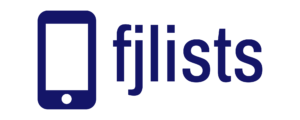In today’s competitive business landscape, a well-defined lead generation process is the cornerstone of success. But visualizing the entire lead generation journey, from initial awareness to conversion, can feel overwhelming. This comprehensive guide unveils the power of lead generation process flowcharts, equipping you with a clear roadmap to attract, nurture, and convert potential customers.
Why Use a Lead Generation Process Flowchart?
Lead generation process flowcharts offer a multitude of benefits:
- Visual Clarity: Flowcharts provide a visual representation of the entire lead generation process, simplifying complex steps and fostering better understanding.
- Improved Efficiency: By mapping out the process, you can identify potential bottlenecks and streamline lead generation efforts for optimal efficiency.
- Enhanced Communication: Flowcharts facilitate clear communication between marketing and sales teams, ensuring everyone understands their roles and responsibilities.
- Performance Optimization: Flowcharts allow you to identify key metrics and track performance at each stage, enabling data-driven optimization of your lead generation process.
- Strategic Alignment: Flowcharts help ensure business contacts at geisinger health system your lead generation activities align with your overall marketing and sales goals.
Understanding the Key Stages of a Lead Generation Process Flowchart
A typical lead generation process flow
chart can be broken down into four main stages:
1. Attract:
This stage focuses on generating awareness and attracting potential customers to your brand. Common activities include:
- Content Marketing: Create valuable content like blog posts, infographics, and videos that address your target audience’s needs.
- Search Engine Optimization (SEO): Optimize your website and content for relevant keywords to improve search engine ranking and organic traffic.
- Social Media Marketing: Engage with your audience on social media platforms, share valuable content, and run targeted ads.
- Pay-Per-Click (PPC) Advertising: Launch PPC campaigns on platforms like Google Ads and social media to reach a highly specific audience.
2. Convert:
This stage aims to convert website visitors into leads by capturing their contact information. Here’s how:
- Landing Pages: Create targeted landing pages with compelling offers and clear calls to action (CTAs) to encourage visitor sign-ups.
- Lead Capture Forms: Strategically place lead capture forms on your website to entice visitors to provide their contact information in exchange for valuable content (e.g., white papers, ebooks).
- Webinars and Live Events: Host webinars or online events addressing topics relevant to your target audience, capturing leads through registration forms.
3. Nurture:
The nurture stage focuses on building relationships and qualifying leads before approaching them for sales. This involves:
- Email Marketing: Build an email list and nurture leads with targeted email campaigns offering relevant content, promotions, and industry LEAD GENERATION TOOL SEMRUSH insights.
- Lead Scoring: Assign scores to leads based on their engagement level and website activities to prioritize those most likely to convert.
- Marketing Automation: Leverage marketing automation tools to personalize communication and automate repetitive tasks, improving lead nurturing efficiency.
4. Close:
The final stage focuses on converting nurtured leads into paying customers:
- Sales Follow-Up: Sales teams follow up with qualified leads, addressing their needs and presenting solutions.
- Free Trials or Demos: Offer free trials or product demos to showcase the value proposition and encourage purchase decisions.
- Customer Relationship Management (CRM): Utilize a CRM system to track lead interactions, manage sales pipelines, and close deals effectively.
Creating Your Lead Generation Process Flowchart:
Here are some practical steps to create your own lead generation process flowchart:
- Identify Your Goals: Define your lead generation goals (e.g., increase qualified leads by X%, improve conversion rate by Y%).
- Map Out the Stages: Break down the lead generation process into the four main stages (Attract, Convert, Nurture, Close).
- Detail Each Stage: Outline specific activities and tools used within each stage of the process.
- Define Decision Points: Identify points in the flowchart where decisions are made about lead qualification or progression to the next stage.
- Visualize the Flow: Use flowchart software or create a visual representation illustrating the entire process with clear arrows and labels.
Leveraging Your Lead Generation Process Flowchart
Once created, your lead generation process flowchart becomes a valuable tool for ongoing optimization:
- Team Alignment: Share the flowchart with all marketing and sales team members to ensure a consistent approach.
- Performance Monitoring: Track key metrics at each stage of the flowchart to identify areas for improvement.
- Process Refinement: Based on data and team feedback, refine your lead generation process to optimize results and maximize ROI.
Conclusion
Lead generation process flowcharts are powerful tools for visualizing, streamlining, and



